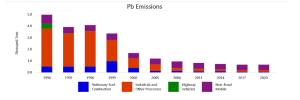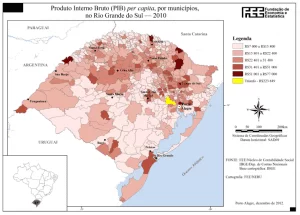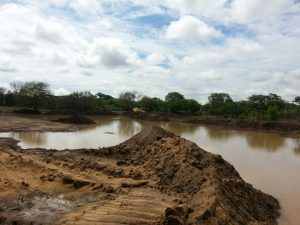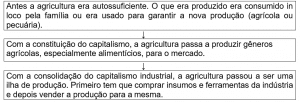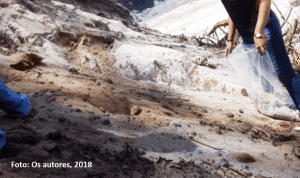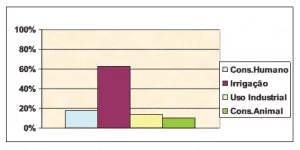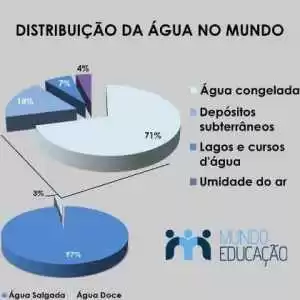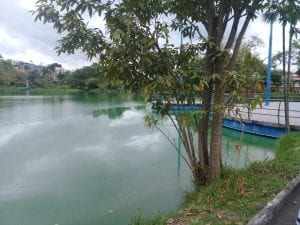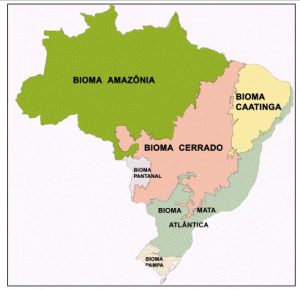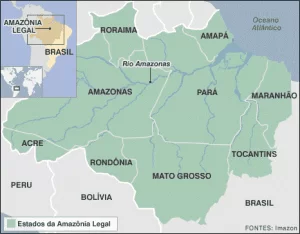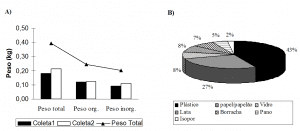ORIGINAL ARTICLE
NUNES, Antônio José Ribeiro [1]
NUNES, Antônio José Ribeiro. An approach to environmental crimes in mining: analysis of law 9.605/98. Revista Científica Multidisciplinar Núcleo do Conhecimento. Year. 07, Ed. 05, Vol. 04, p. 143-157. May 2022. ISSN: 2448-0959, Access link: https://www.nucleodoconhecimento.com.br/environment/environmental-crimes
ABSTRACT
In view of the need to meet social demand, the search for natural resources to be converted into material goods has jeopardized the preservation of the environment and, consequently, the quality of future life. In this context, in order to answer the following guiding question: what is the role of Law 9.605 in the legal protection of the environment, especially with regard to environmental crimes in mining? This article aimed to analyze the criminal protection of the environment under Law 9,605, and more specifically, environmental crimes in mining exploration. Thus, to carry out this study, an exploratory bibliographic research was carried out, through which it was concluded that laws can work together with the sole objective of curbing environmental crimes against the protection of nature, especially regarding the illegal practice of mining, ensuring quality of life for the present and future generations.
Keywords: Environmental Crimes, Environment, Mining, Law 9605.
1. INTRODUCTION
Currently, the world economy has been increasingly ambitious and this condition is due to the need to meet the social demand for natural resources to be converted into material goods. In this way, this unbridled conduct practiced by individuals and legal entities allows actions that go beyond planning and even non-observance of legislation, in order to put the environment at risk, threatening the present and, especially, future quality of life. Based on this situation, there is a significant increase in society’s concern about the aggressions committed against the environment (BASTOS, 2022; SACHS, 1997).
In this context, it is understood that among the activities that have a negative impact on the environment, mining, of any kind, is offensive, at least as long as it is unplanned, indiscriminate, clandestine or unsupervised.
As a result, in the development of the mineral sector, the protection of the environment is supported by the Federal Constitution of 88, in its Art. 225, § 2, which establishes that whoever exploits mineral resources is obliged to recover the degraded environment, in accordance with a technical solution required by the competent public agency, in accordance with the law (BRASIL, 1988).
Furthermore, the protection of the environment is also protected through specific legislation of the National Mining Agency – ANM, from the publication of Ordinance No. Through inspection campaigns, the ANM regulates mining activity in titled and untitled areas in the protection of mineral heritage and, especially, the environment, applying sanctions provided for in legislation in the competent criminal and administrative spheres (BRASIL, 1998; MIRANDA, 2020) .
That said, in addition to these provisions, currently, the main legal instrument that regulates the criminal liability of individuals and legal entities for damage to the environment is Law 9.605/98, which systematized and gave organic treatment to the environmental criminal issue in Brazil.
In this context, in the criminal protection of the environment, from the development of the aforementioned legislation, the legal institutes started to be directed to the prevention and inhibition of illegal activities in the moment that precedes the impact on the protected legal interest, causing an increase in the sphere of protection, in order to prevent damage from actually occurring in the environment (HUESO, 2015; MIRANDA, 2020).
Therefore, addressing environmental crimes arising from mining activity is necessary due to undue actions and environmental crimes committed with the ambition to meet social demand, leaving no doubt about the need to establish effective protection to contain environmental crimes, demanding clear and comprehensive laws and harsh penalties for violators in protecting the environment (TELES and VIANA, 2020).
In this aspect, this study sought to answer the guiding question: what is the role of Law 9,605 in the legal protection of the environment, especially with regard to environmental crimes in mining? With the objective of analyzing the criminal protection of the environment under Law 9.605, and more specifically, environmental crimes in mining exploration through a bibliographic research.
In view of this, the analysis of the theme is justified by the importance of mining activity in Brazil, which plays an important role in the national economy, and also by the fact that there is no possibility of extracting ores without a minimum of damage to the environment the law seeks to minimize such impact, including the classification of certain conducts as environmental crimes.
2. PROTECTION OF THE ENVIRONMENT AND ENVIRONMENTAL CRIMES
The need for legal protection of the environment arose from the moment when its degradation began to threaten not only the well-being, but also the quality of human life and its own survival (VASCONCELLOS, 2008).
The evolution of the legal protection of the environment in Brazil was strictly linked to international economic movements. In the first instance, the main object of protection was pau-brasil, a commodity of the mercantilists that marked the colonial phase and part of the imperial phase of Brazilian history, where there was a great concern on the part of the Portuguese government to adopt measures that hindered the smuggling of wood, as well as actions that minimize possible fluctuations in the international price of wood. In the republican phase, there was the creation of the main sectoral environmental codes in the periods of implementation of public policies aimed at the structuring and modernization of the Brazilian industrial park, which implied a significant increase in the consumption of renewable and non-renewable natural resources (NUNES, 2005). , p.69).
In this context, with the objective of defending the preservation of the environment, environmental law began to be addressed in sparse legislation. So, the defense of the environment was mentioned in art. 170, VI of the Federal Constitution as one of the principles that govern the Brazilian economic order (BRASIL, 1988).
It was also defined, according to inc. I of art. 3 of Law 6,938/81, as “the set of conditions, laws, influences and interactions of a physical, chemical and biological order, which allows, shelters and governs life in all its forms”. Having, still, instruments of protection to the environment foreseen in the Art. 1 of this Law, based on items VI and VII of art. 23 and in art. 235 of the Constitution, which “establishes the National Environmental Policy, its purposes and mechanisms of formulation and application, constitutes the National Environment System (Sisnama) and institutes the Environmental Defense Registry” (BRASIL, 1981).
In addition, liability for environmental damage was also provided for in § 3 art. 225 of the CF[2], which establishes that conduct and activities that are harmful to the environment will subject violators, individuals and legal entities, to criminal and administrative sanctions, regardless of the obligation to repair the damage caused, and may even allow double punishment, considering that sanction administrative or civil does not preclude criminal and vice versa (BRASIL, 1998). That is, the sanction will be applied without prejudice to the repair of the damage that must be restored by the causer, regardless of fault, as established in art. 927 of Law No. 10,406/02 (BRASIL, 2002).
However, with environmental law being disorganized in the sparse legislation, the protection of the environment has become weakened by the difficulty of quickly and effectively locating the legal provision to be applied in a given situation, often being left to the responsibility of the jurisprudence the solution about the events practiced (SETTE, 2014, p.221).
Thus, considering this scenario, the Brazilian legal system, especially with regard to the environmental issue, in past times, has never been effective in the application of penalties in the fight against crimes committed against the environment, and this is due to the various environmental laws that had specific functions, in order to weaken the penalties for environmental crimes committed, such as Law No. 6,938/81 (National Environmental Policy), Law No. 5,197/67 (Hunting Code) and Law No. of the Forest Code) (VASCONCELLOS, 2020).
In this context, administrative infractions only started to receive relevant attention from Law 9,605/98, which dedicated a specific chapter to this, allowing a new phase for the legal-environmental improvement (BRASIL, 1998). In other words, from the sanction of Law nº 9.605, of February 12, 1998, which deals with Environmental Crimes, the Brazilian legal system can effectively establish criminal and administrative sanctions in the fight against harmful conduct by legal entities to the environment.(VASCONCELLOS, 2020).
In this context, according to Sette (2014, p. 221-222), although the Federal Constitution has given constitutional-penal protection in the environmental sphere (§ 3 of art. 225) and Law 6,938/81 has disciplined and formatted the National Environmental Policy (PNMA), it was only with the arrival of Law 9,605/98 that the need for infra-constitutional legislation aimed especially at the environmental sphere was met.
So, one of the main innovations of Law 9.605/98 was to unite all environmental legislation into one, where all crimes related to the environment were grouped, in order to make their consultation easier.
In this sense, Law 9.605/98 regulated article 205 of the Federal Constitution in its criminal aspect, through its articles 2 to 69, where it systematized the rules of substantive law and specific criminal procedure, as well as described the typical conduct and criminal sanctions applicable in the environmental scope, thus enabling a more organic and systemic treatment (BRASIL, 1998).
That said, the objective of Law 9,605/98 is, mainly, environmental protection and the preservation of nature in all essential elements for human life and for the maintenance of ecological balance, seeking to protect the quality of the environment in terms of the quality of life as a way of protecting the fundamental right of the human person (VGR, 2020).
In this way, a peculiarity of criminal environmental crimes is that the theory adopted as a rule is that of danger and not that of effective damage, that is, in criminal environmental matters, the legislator, as a rule, discarded the need for the occurrence of damage to the criminal imputation, just the probability of its occurrence (SETTE, 2014, p.229).
Thus, unlike crimes of harm, which are only considered consummated when there is an effective injury to a good or legal interest, crimes of danger, in turn, do not wait for effective harm to be judged perfect. Just set them to damage probability. In this probability of damage is the definition of danger, such as, for example, the conduct described in article 54 of Law 9.605/98, which provides: “cause pollution of any nature at such levels that result or may result in damage to human health (…)” (BRASIL, 1998).
Thus, according to Machado (2016, p. 463), when criminalizing a conduct that leads to the production of a result of damage/violation or danger, one is facing a Criminal Law of prevention, to the exact extent of the prohibition .
This tendency finds its justification at the moment when the character of prevention of the offense to the legal good proves to be increasingly necessary when it comes to risk reduction, in contrast to the old conception of classical criminal law of punishment for the effective damage to the protected object by law.
Thus, the criminal types created by Law 9.605/98 are covered in Chapter V, articles 29 to 69-A. The aforementioned Chapter was subdivided into sections, each with the concern of protecting a specific legal object (BRASIL, 1998).
Therefore, the aforementioned law also deals with issues related to mining.
3. PROTECTION OF MINING AS AN ENVIRONMENTAL ACTIVITY
Mining can be considered, generically, as an activity of extraction of minerals that have economic value (NUNES, 2005, p.70). Thus, taking into account that mining is a form of economic activity, there is nothing more natural than conditioning its practice to the conservation of the environment.
In this context, Nunes (2005, p.70) highlights that there is a very close relationship between the protection of the environment and the regulation of mining, since this activity has direct impacts on the environment.
That said, mining is an activity that can cause many forms of environmental degradation, either alone or together. (If possible, add a quote here that presents some examples of environmental degradation.).
Gold mining can be isolated or collective and occurs in states of Brazil with the most relevant impact through the use of mercury in the gold concentration process, considering that when on a larger scale, that is collective, it can cause large deforestation for infrastructure installation. operational (SOUSA, s.d.).
Iron ore mining, due to its scope, causes large deforestation and earth movement, culminating in the concentration of tailings from processing, which become an environmental liability of high risk to the local and comprehensive environment, considering the vulnerability of basins waste and its potential risk of contamination (SOUSA, s.d.).
Thus, in view of the damage caused by mining, the 1988 Constitution established in art. 170, VI of the Federal Constitution the defense of the environment and, later, included a chapter dedicated to the environment (art. 225), which foresees the obligation of the one who explores mineral resources to recover the degraded environment (BRASIL, 1988).
In this context, the Mining Code also applies to mining activities (Decree-law 227 of 1967) which, in relation to the environment, in its art. 47, it is incumbent upon the miner to be liable for damages and losses to third parties that result, directly or indirectly, from the mining (section VIII), and to prevent air or water pollution, which may result from the mining works (section XI) (MENDES and VAZ, 2002, p.248).
In addition, also contemplating the protection of the environment, Ordinance nº 237/2001 of the DNPM[3], created the Mining Regulatory Norms – NRM, which aims to discipline the mining activity in its entirety, that is, to regulate the rational use of mineral goods, observing the technical and technological conditions of operation, safety, and in a planned way to guarantee service to future generations in a healthy environment (BRASIL, 2001).
Environmental protection related to mining is supported by an important instrument, the Environmental Operating License – LAO, issued by the competent Federal, State and Municipal environmental agencies, which define the environmental conditions for the effective operation of the enterprise. In this context, its absence generates administrative criminal consequences with representation at the state and federal levels (IMASUL, s.d.; BRASIL, 2016).
That said, in the sphere of environmental responsibility, the Public Power acts on its own initiative, ex officio, or upon provocation or denunciation by society or an isolated citizen (BRANCHI, 2016).
4. ENVIRONMENTAL CRIMES IN MINING
With regard to crime in mineral extraction, art. 55 of Law 9,605/98 considers it a crime to “perform research, mining or extraction of mineral resources without the competent authorization, permission, concession or license, or in disagreement with the one obtained”, with the explicit objective of protecting the environment (BRASIL, 1998) .
In this case, the protected legal interest is the preservation of the environment, which is seriously threatened by all types of mineral exploration activities. While any person can be the active subject of the criminal practice, whether physical, as long as it is attributable, or legal, including in this list the director, the administrator, the member of the board and of a technical body, the auditor, the manager and the agent or representative of a legal entity when he or she becomes aware of the criminal conduct of a third party and, being able to act to prevent the illicit behavior, fails to prevent its practice. Whereas, the passive subject, directly, is the whole of collectivity. And indirectly, it may be the owner or possessor of the damaged or exploited area, and may even be the Union (CARVALHO, 2013, p.357).
The material object can be the soil, subsoil, or the waters of some river, lake or pond. And the typical behavior consists of carrying out research, mining or extraction of mineral resources without the competent authorization, whether: concessions and licenses, or in disagreement with the title granted (CARVALHO, 2013, p.357).
Thus, the penalty provided for this crime is detention from six months to one year and a fine (BRASIL, 1998).
Thus, the Sole Paragraph of art. 55 of Law 9,605/98 provides that those who fail to recover the researched or explored area incurs in the same penalties, as expressly provided for in the authorization titles: concession, license, permission or specific determination of the competent body (BRASIL, 1998).
There is also that, through the typification of the conduct of the one who illegally exploits raw material belonging to the Union, and considering it unlawful, the Public Power started to prohibit the attack on its patrimony. In this sense, article 2 of Law 8.176/91 provides that it is a crime, in the form of usurpation, to produce goods or exploit raw materials belonging to the Union, without the competent authorization or in disagreement with the legally authorizing title (BRASIL, 1991).
That is, despite the criminalization of illegal mineral extraction in art. 55 of Law 9.605/98, Usurpation, according to art. 2 of Law 8,176/91, can also be considered as crimes related to illegal mineral extraction, since the mineral resources of the Brazilian subsoil are classified as assets of the Union, and not of the land owner, and for their removal it is necessary to grant the competent bodies, in addition to a series of other crimes (BRASIL, 1991).
This time, in the cases of illegal extraction of mineral resources, the dominant position is in the sense of the existence of two crimes: carrying out research, mining or extraction of mineral resources without authorization (art. 55, Law 9605/98) (BRASIL, 1998 ) and usurpation against the Union (art. 2, Law 8.176/91) (BRASIL, 1991), in a formal contest under art. 70 of the Penal Code (BRASIL, 1940).
In this sense, the Superior Court of Justice has already expressed itself, namely:
Não existe conflito aparente de normas entre o delito previsto no art. 55 da Lei nº 9.605/98, que objetiva proteger o meio ambiente, e o crime do art. 2.º, caput, da Lei n. º 8.176/91, que defende a ordem econômica, pois tutelam bens jurídicos distintos, existindo, na verdade, concurso formal. Precedentes. (BRASIL, 2011).
That said, it should also be noted that the Federal Constitution innovated, by providing for the possibility of infra-constitutional legislation to provide for environmental crimes committed by legal entities.
In this sense, Law 9,605/98 provides for the liability of the legal entity for environmental damage, in this case not requiring proof of guilt, but only of the fact, causal link and damage (BRASIL, 1998).
The criminal liability of the legal entity does not exclude the application of a penalty to the individual involved in the event, pursuant to art. 3 of Law 9.605/98, namely:
Art. 3º. As pessoas jurídicas serão responsabilizadas administrativa, civil e penalmente conforme o disposto nesta lei, nos casos em que a infração seja cometida por decisão de seu representante legal ou contratual, ou de seu órgão colegiado, no interesse ou benefício da sua entidade.
Single paragraph. The liability of legal entities does not exclude that of individuals, authors, co-authors or participants in the same event (BRASIL, 1998).
In this context, in relation to Crimes against Environmental Administration, Art. 67 of Law 9605/98 also provides that it is a crime for a public official to grant licenses and permissions in disagreement with environmental standards for activities that require an official authorization act from the competent public authority, so that its practice generates sanctions for the responsible party (BRASIL, 1998).
As can be seen, this is a criminal offense of great scope, especially with regard to the events of everyday life. Here, the legislator sought to hold responsible not only the omissive and negligent public official, who, having a legal duty to comply with an obligation of relevant environmental interest, fails to do so, intentionally or culpably, but also the one who has a contractual duty, that is , whoever signs any contract with the Government (CARVALHO, 2013, p.409).
That said, according to art. 68 of Law 9605/98, it is also considered a crime to leave anyone who has a legal or contractual duty to do so, to fulfill an obligation of relevant environmental interest (BRASIL, 1998).
On the other hand, it is also a crime, according to art. 69 of Law 9605/98, to impede or hinder the inspection action of the Public Power in dealing with environmental issues (BRASIL, 1998).
Unfortunately, this type of criminal behavior is not uncommon. The national news at all times reports both people outside the public authorities as well as employees of environmental agencies (federal, state and municipal) who act in order to prevent or hinder the inspection action (MIRANDA, 2020).
In this context, finally art. 69-A of Law 9605/98 provides that it is a crime to prepare or present, in the licensing, forest concession or any other administrative procedure, study, report or environmental report that is totally or partially false or misleading, including by omission (BRASIL, 1998).
Thus, it is understood that the fight against environmental crimes is quite challenging, either because of the distances and difficulties of access, a trademark of the North region of the country, or because of the interests involved and the complexity of the transactions, or the absence of effective inspection systems and control. Therefore, it is up to Organs management, inspection and public security bodies to be able to understand the dimension of this challenge, seek the best strategies and propose intelligent, quick solutions and accountability of the offender in the order of magnitude of the environmental crime committed.
5. CONCLUSION
Considering that this article sought to answer the guiding question: what is the role of Law 9,605 in the legal protection of the environment, especially with regard to environmental crimes in mining? In order to analyze the criminal protection of the environment under Law 9605, and more specifically, environmental crimes in mining exploration. Through this study, it was possible to observe that Law 9.605/98 emerged as a result of a demand of social conscience for an effective legal protection of the environment.
Thus, with the development of Law 9.605/98, environmental law, previously present in sparse legislation, began to be systematized in just one device, which facilitated criminal prosecutions against actions that harm the environment. So, there was an advance in the criminal treatment of practices and activities that could cause harmful consequences to the environment, highlighting the environmental crimes that occurred in mineral exploration.
However, it should be noted here that the approach to environmental crimes arising from mining activity is attributed to society’s growing need for the use of mineral resources, the rampant ambitious economy and the importance of the mineral sector in the country’s development. Thus, given that this framework of interests generates undue actions and committed environmental crimes, there is no doubt about the need to establish effective protection to contain environmental crimes, demanding clear and comprehensive laws and harsh penalties for violators in protecting the environment.
Thus, considering that most public policy decisions are based on economic relations, it is necessary to know the economic values associated with the preservation and sustainable use of biodiversity as a contemporary way of ensuring that the environmental variable has an effective weight in decision-making , very important in the environmental socioeconomic relationship, in favor of participatory environmental protection with the efforts of all and duly protected by environmental criminal law, as a guarantee of a healthy and supportive environment for the human species.
Therefore, the protection of nature cannot be restricted only to legislation, it depends on multiple efforts, from the individual, society, entities, governments and laws, where everyone is responsible for a healthy and protected environment for the survival of the human species as enshrined right of all and future generations. Laws are necessary and fundamental and are a great achievement of Brazilian society in environmental protection, however, periodic updates are necessary to correct and/or implement new measures truly committed to the environmental issue, implementing instruments that ensure their effectiveness, protecting and holding accountable fully and criminally anyone who instigates, determines or commits an environmental crime.
REFERENCES
BASTOS, Estêvão Kopschitz Xavier. Boletim de expectativas – abril de 2022. Ipea, Carta de Conjuntura, 2022. Disponível em: https://www.ipea.gov.br/cartadeconjuntura/index.php/category/economia-mundial/.
BRANCHI, Géssica Priscila. A responsabilidade civil do Estado por omissão na fiscalização nos crimes ambientais. Jusbrasil, 2016.
BRASIL. Decreto-lei nº 2.848, de 7 de dezembro de 1940. Brasília, DF: Senado Federal, 1940. Disponível em: http://www.planalto.gov.br/ccivil_03/decreto-lei/del2848.htm.
BRASIL. Decreto-lei nº 227, de 28 de fevereiro de 1967. Brasília, DF: Senado Federal, 1967. Disponível em: http://www.planalto.gov.br/ccivil_03/decreto-lei/del0227.htm.
BRASIL. Lei nº 10.406, de 10 de janeiro de 2002. Brasília, DF: Senado Federal, 2002. Disponível em: http://www.planalto.gov.br/ccivil_03/leis/2002/l10406compilada.htm.
BRASIL. Lei nº 6.938, de 31 de agosto de 1981. Brasília, DF: Senado Federal, 1981. Disponível em: http://www.planalto.gov.br/ccivil_03/leis/l6938.htm.
BRASIL. Lei nº 8.176, de 8 de fevereiro de 1991. Brasília, DF: Senado Federal, 1991. Disponível em: http://www.planalto.gov.br/ccivil_03/leis/L8176.htm.
BRASIL. Lei nº 9.605, de 12 de fevereiro de 1998. Brasília, DF: Senado Federal, 1998. Disponível em: http://www.planalto.gov.br/ccivil_03/leis/l9605.htm.
BRASIL. Lei nº 9.605, de 12 de fevereiro de 1998. Lei de Crimes Ambientais. Brasília, DF, 1998. Disponível em: http://www.planalto.gov.br/ccivil_03/leis/l9605.htm.
BRASIL. Portaria DNPM nº 237 de 18/10/2001. Normas Brasil, 2001. Disponível em: https://www.normasbrasil.com.br/norma/portaria-237-2001_182009.html.
BRASIL. Portaria nº 155, de 12 de maio de 2016. Aprova a Consolidação Normativa do DNPM e revoga os atos normativos consolidados. Diário Oficial da União, Seção 1, Brasília, DF, n. 93, p. 34, 2016. Disponível em: https://www.in.gov.br/materia/-/asset_publisher/Kujrw0TZC2Mb/content/id/22910085/do1-2016-05-17-portaria-n-155-de-12-de-maio-de-2016-22909482.
BRASIL. Superior Tribunal de Justiça. Habeas Corpus nº 149.247/SP, da QUINTA TURMA do Superior Tribunal de Justiça. São Paulo, 2011. Disponível em: https://processo.stj.jus.br/SCON/pesquisar.jsp?i=1&b=ACOR&livre=((%27HC%27.clap.+e+@num=%27149247%27)+ou+(%27HC%27+adj+%27149247%27).suce.)&thesaurus=JURIDICO&fr=veja.
BRASIL. Constituição da República Federativa do Brasil. Brasília, DF: Senado Federal, 1988. Disponível em: http://www.planalto.gov.br/ccivil_03/constituicao/constituicao.htm.
CARVALHO, Antônio Cesar Leite de. Comentários à Lei Penal Ambiental: Parte Geral e Especial (Artigo por Artigo). 3. ed., rev. e atual. Curitiba: Juruá, 2013.
HUESO, Cauê Costa. A tutela penal ambiental. Jus.com.br, 2015. Disponível em: https://jus.com.br/artigos/38620/a-tutela-penal-ambiental.
IMASUL. Instituto de Meio Ambiente de Mato Grosso do Sul. LICENCIAMENTO AMBIENTAL. [s.d.]. Disponível em: https://www.imasul.ms.gov.br/licenciamento-ambiental-3/.
MACHADO, Paulo Affonso Leme. Direito Ambiental Brasileiro. São Paulo: Malheiros, 2016.
MENDES, Murilo; VAZ, Paulo Afonso Brum. Meio ambiente e mineração. In: FREITAS, Vladimir Passos de (Coord.). Direito Ambiental em evolução. Volume 1, 2. ed. Curitiba: Juruá, 2002.
MIRANDA, Marcos Paulo de Souza. Obstrução de fiscalização ambiental constitui crime. Consultor Jurídico, 2020. Disponível em: https://www.conjur.com.br/2020-ago-22/ambiente-juridico-obstrucao-fiscalizacao-ambiental-constitui-crime.
NUNES, Paulo Henrique Faria. Meio ambiente & mineração – O desenvolvimento sustentável. Curitiba: Juruá, 2005.
SACHS, Ignacy. Desenvolvimento numa economia mundial liberalizada e globalizante: um desafio impossível? Meio Ambiente e Desenvolvimento, n. 11 v. 30, 1997. Disponível em: https://www.scielo.br/j/ea/a/fSh98gpFSRN73YyGqHqDQzH/?lang=pt.
SETTE, Marli Teresinha Deon. Manual de Direito Ambiental. 3. ed., rev. e atual. Curitiba: Juruá, 2014.
SOUSA, Rafaela. Impactos ambientais causados pela mineração. Brasil Escola [s.d.]. Disponível em: https://brasilescola.uol.com.br/geografia/os-problemas-gerados-pela-mineracao.htm.
TELES, Marcela Bahia de Sá; VIANA, Agnaldo Dias. A Responsabilidade Penal Das Pessoas Jurídicas Por Crimes Ambientais. Âmbito jurídico, 2020. Disponível em: https://ambitojuridico.com.br/cadernos/direito-penal/a-responsabilidade-penal-das-pessoas-juridicas-por-crimes-ambientais/.
VASCONCELLOS, Emanueli Berrueta de. O Ministério Público na tutela do meio ambiente. Revista do Ministério Público do RS, Porto Alegre, n. 60, 2008. Disponível em: http://www.amprs.com.br/public/arquivos/revista_artigo/arquivo_1246468935.pdf.
VGR. Quais são os principais aspectos da Lei dos Crimes Ambientais? 2020. Disponível em: https://www.vgresiduos.com.br/blog/lei-dos-crimes-ambientais/#:~:text=Lei%20n%C2%BA%209.605%2F98%20%E2%80%93%20Lei%20dos%20Crimes%20Ambientais&text=A%20Lei%20dos%20Crimes%20Ambientais%20tem%20como%20principal%20objetivo%20%C3%A0,os%20tipos%20de%20crimes%20ambientais.
APPENDIX – FOOTNOTE
2. Federal Constitution.
3. National Department of Mineral Production.
[1] Postgraduate in Auditing, Management and Environmental Expertise, Postgraduate in Occupational Safety Engineering, Specialist in Mineral Resources – Mining Engineer. ORCID: 0000-0003-0973-939X.
Submitted: January, 2022.
Approved: May, 2022.

